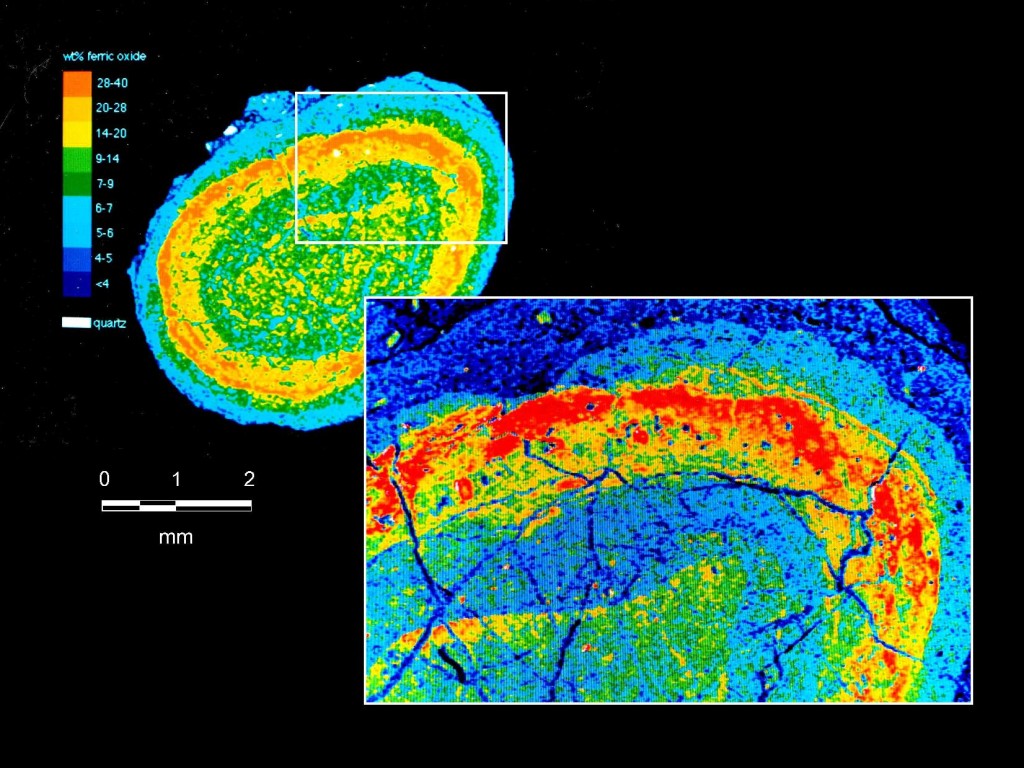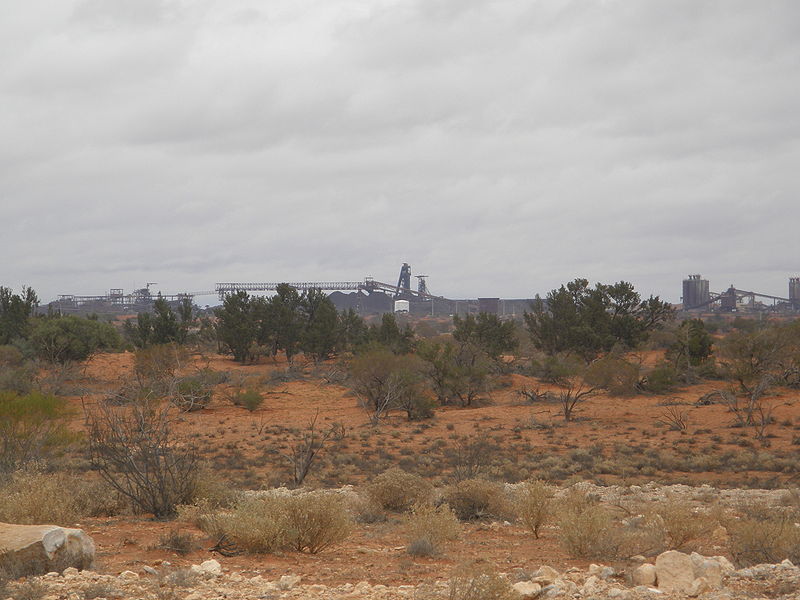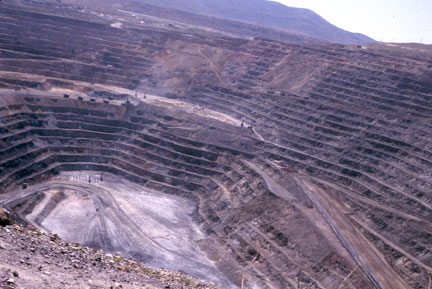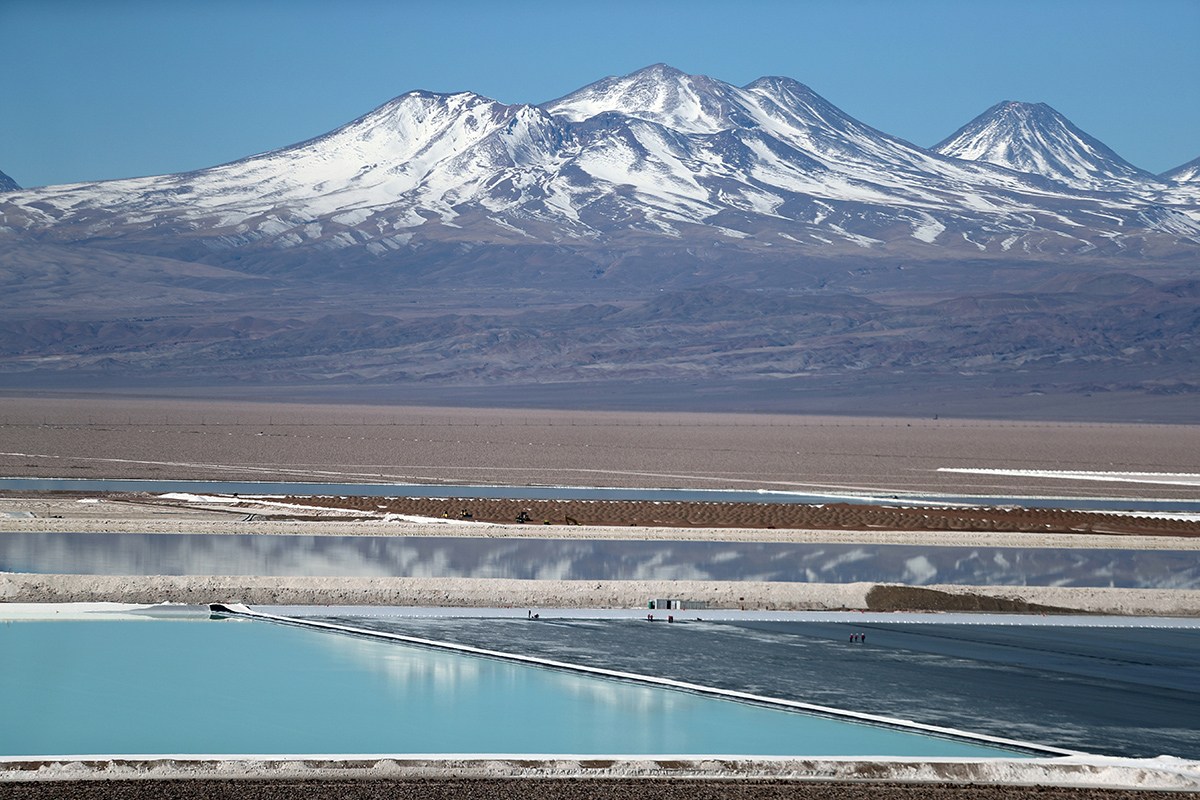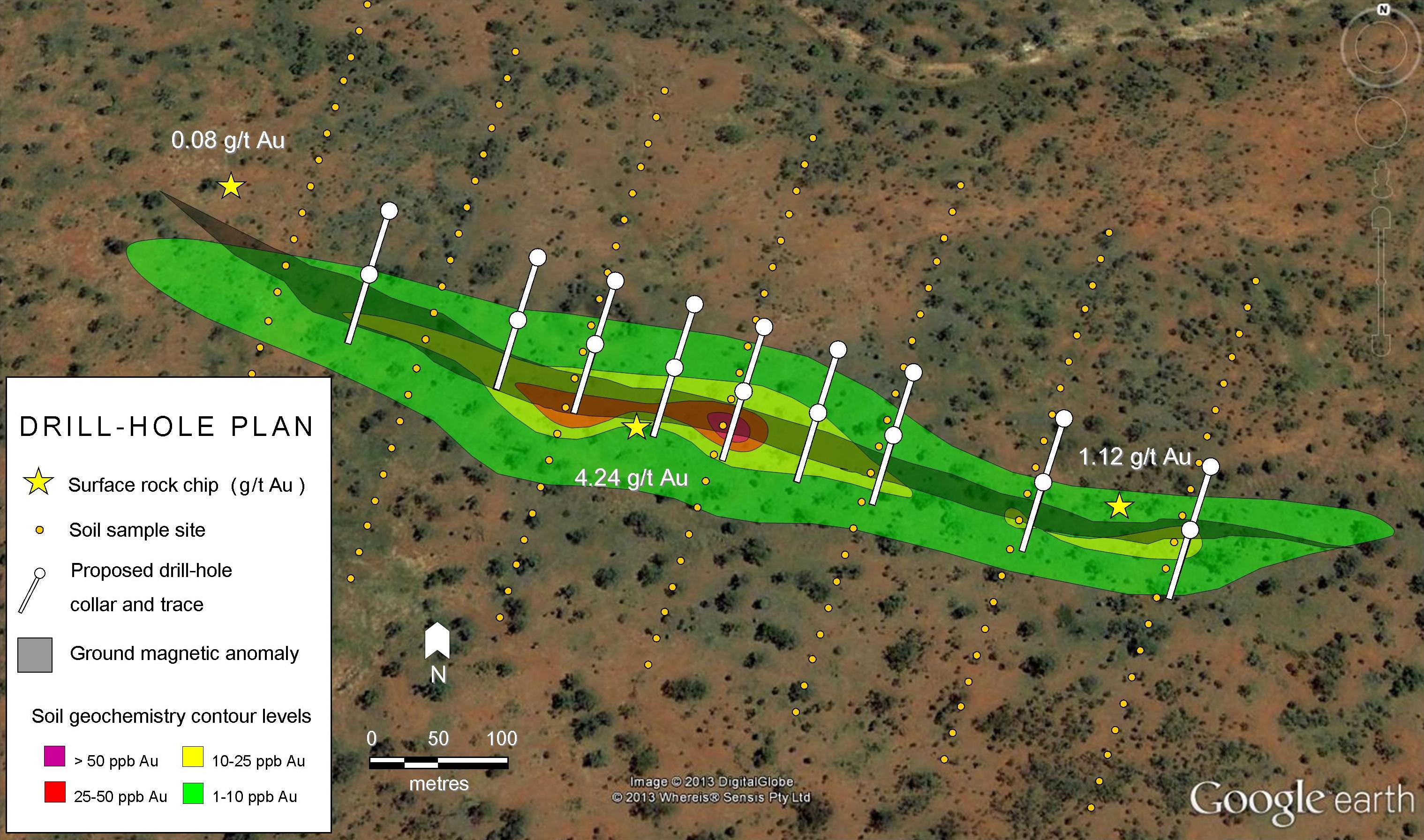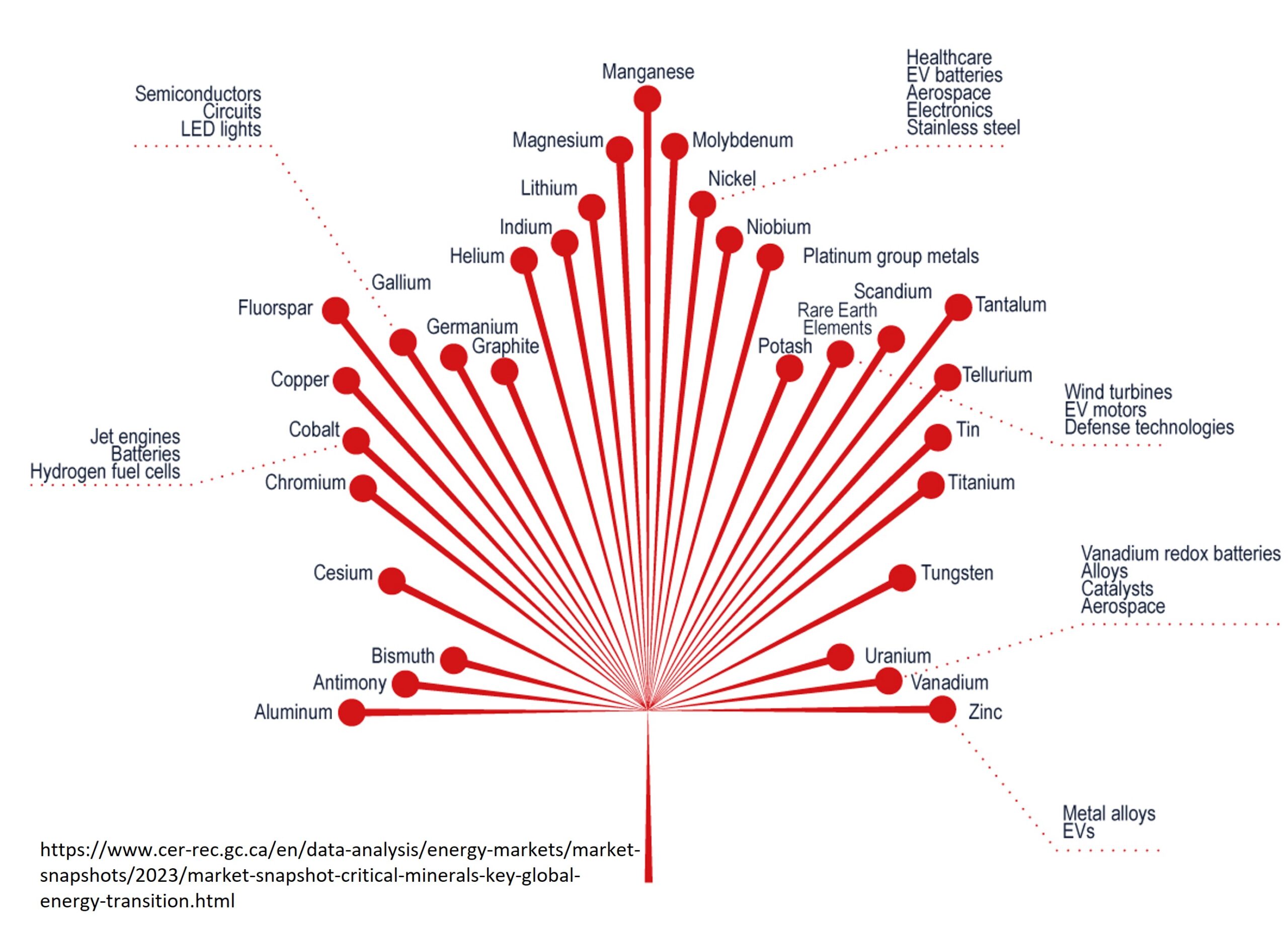Even among world-class deposits and districts, the Sudbury Basin stands out. Its’ uniqueness may be a good thing, because this trillion-dollar mining district was forged in the fiery impact of a planet-killing asteroid.
Geology
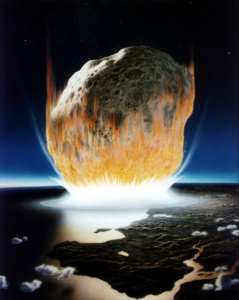
The Sudbury basin was formed by a 10-15 km wide asteroid or comet impacting a shallow sea in what is now central Ontario, Canada 1.85 billion years ago. The resulting ~200-250 km wide crater is the second largest known in the world, being much larger than the 150 km Chicxulub crater formed by the asteroid that wiped out the dinosaurs. If such as impact were to occur today it would certainly spell the end of life as we know it.
The basin is one of the oldest craters still in existence and has been deformed and eroded into its’ present oval shape and 60 km size. Although the basin itself is not easily recognizable as a crater, smaller scale features such as shatter cones are well known in the area, and a layer of rock fragments blasted out of the crater have been mapped as far away as Minnesota, some 800 km distant. A layer of ash and debris likely encircled the entire planet at the time.
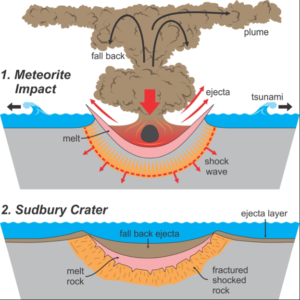
The basin is filled by impact breccias and later sedimentary rocks of the Whitewater Group, and igneous rocks of the Sudbury Igneous Complex (SIC). The SIC forms a ring around the Whitewater Group and is dominated by a melt sheet of norite and gabbro formed by the heat of impact. Deposits in the Sudbury Basin occur mainly at the base of the SIC and in surrounding dykes, with most being concentrated into two clusters: the South Range near the city of Sudbury and the North Range along the basin’s northern margin. Deposits are often associated with a layer of breccia and are generally graded from massive to disseminated iron, nickel (Ni) and copper (Cu) sulfides moving upwards.
Deposits in the Sudbury area are classified as magmatic deposits, where metals combine with sulfur in molten rock. Metal-laden sulfide melts can then segregate from common silicate melts, scavenging yet more metal as it sinks to form massive sulfide deposits at the base of magma chambers and wherever fluid conditions favour the accumulation of dense molten sulfide. Like most magmatic sulfide deposits, ore minerals are dominated by various Ni and Cu sulfides, with subordinate cobalt (Co) and precious metals including gold (Au), silver (Ag) and Platinum Group Elements (PGE) produced as byproducts.
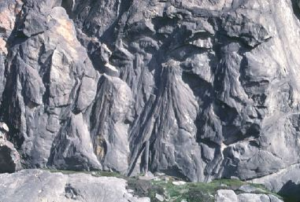
Conditions for forming magmatic deposits were near ideal in the newly formed crater. Rocks in the area were a mix of mafic-ultramafics, which contained metals, and shallow marine sediments, which contained sulfur. The enormous heat of the impact melted and mixed these rocks together, effectively combining the main ingredients for magmatic deposits. Deep fractures created by the shock wave may also have allowed magma from deep below to flow upwards, adding even more metal and helping concentrate sulfides into dozens of individual deposits. Although asteroids can be very rich in metals, recent studies suggest the impactor was likely a comet, which are mostly made of ice and silicate rock, so the impactor itself likely didn’t contribute much besides heat.
While many magmatic deposits are known only Sudbury was formed by an impact, although some have speculated that South Africa may owe some of its mineral riches to the Vredefort impact, which created the largest crater in the world.
A Rich History
While the mineral potential of the Sudbury Basin was recognized as early as the 1850’s, mining didn’t begin until 1883, when blasting for railway construction unearthed a Ni-Cu deposit by chance. At the time Ni had little use and was considered little more than an impurity in the far more valuable Cu ore. This began to change in the 1900’s as new applications and better refining technology made Ni mining more profitable. By 1910 the Sudbury Basin was producing 80% of the world’s Ni; even Tomas Edison made an unsuccessful attempt to get in on the Sudbury Ni boom.
The area’s fortune took a major upswing as Ni demand soared during World War 1, only to be devastated by the end of the war and the Great Depression. It was in 1928 during these hard years that the future mining juggernauts INCO and Falconbridge were formed; these two companies would dominate Ni production in the basin, and globally, for decades to come.
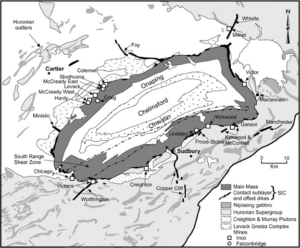
The outbreak of the second World War was a major boost to the area’s fortunes as Sudbury once again stepped up to meet the demands of the war effort. Demand for Ni became more stable following the war, and the Sudbury Basin became the most important mining district in North America, and one of the most important globally. The exploitation of Ni laterite deposits began to erode the importance of the basin in the 1980s, but the high-grade, high-tenor nature of mineralization, combined with high-caliber infrastructure kept the basin relevant. Despite this, both Falconbridge and INCO proved too small to survive in the increasingly globalized mining industry; Falconbridge was absorbed by Swiss giant Glencore in 2006, with INCO acquired by Brazilian mining giant Vale in the same year.
Environmental Issues and Remediation
Prior to the 1970’s very little though was given to the effects of mining on the environment. Sulfur emissions from the area’s smelters had become so extreme that acid rain and polluted soils killed vegetation for miles around. The landscape of barren rocks was so desolate that NASA actually trained Apollo Program astronauts there: the Sudbury crater had once again become a moonscape. Recognition of this led to the construction of Sudbury’s iconic ‘superstack’, the tallest freestanding chimney in the western hemisphere.

While this helped the local situation significantly, it accomplished this largely by dispersing toxic emissions more efficiently and over a larger area rather than truly solving the problem. It wasn’t until the 1990’s that regulation forced companies to reduce emissions, remediate contaminated areas and plant millions of trees. These efforts have proven highly successful; forests have largely reclaimed the moonscapes of the past, demonstrating that with even the most contaminated sites can be reclaimed. The superstack now stands dormant and slated for demolition. Sudbury provides an example of how, given the right technology and sufficient time and motivation, the mining industry can become more sustainable.
Sudbury Today
Today the Sudbury Basin is the richest mining district in North America, and in the top ten globally. The city of Sudbury is the center of the North American mining industry, with specialized mining equipment being manufactured locally and Ni ore from mines 1000s of km away being imported for processing via rail. As of 2020, the basin has produced over $250 billion worth of metal including 8 Mt each of Cu and Ni, 3200 t Ag, 300 t platinum, and 100 t Au. The basin is estimated to host >1600 Mt at ~ 1.2% Ni, ~1.0% Cu and ~0.8 g/t PGE, enough ore to sustain mining for at least another 100 years.
The basin currently hosts 8 operating mines, with one more in development, 2 mills, 2 smelters, and a nickel refinery. The lion’s share, 5 mines, 1 mill, 1 smelter and the refinery are owned by Vale. Glencore owns 2 operating mines with one more under development, as well as the other smelter and mill. The remaining mine is owned by KGMH, a Polish company. A large number of juniors are also actively exploring in the area.
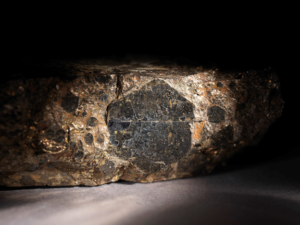
While overall resources in the basin remain substantial, the remaining ore is becoming deeper and lower grade. Many of Vale’s mines, in particular, are nearing the end of their life, and will either require major reinvestments or face closure over the next few years as already high costs continue to rise.
On a more optimistic note, the drive towards electrification is expected to increase demand for Ni, Cu, and Co, which may well breath new life into aging mines, especially considering the area’s excellent supporting infrastructure. Undiscovered deposits almost certainly remain to be found, although companies are being forced to look deeper and harder to find them. Cobalt has been a relatively minor source of income in the basin, but its increasing value may help to offset the costs of mining ever deeper deposits in the future. Increasing international tensions and competition for minerals may also make the area more attractive as governments become increasingly concerned with developing domestic supply chains.
Sudbury is no stranger to changing fortunes, but it will remain the cornerstone of the North American Ni supply chain for decades to come.
Companies Mentioned
- Glencore https://www.glencore.com/ (website)
- Vale http://www.vale.com/canada/EN/Pages/default.aspx (website)
- KGMH https://kghm.com/en (website)
Further Reading
- Joyce, D. and Poulin, R. (2020): Sudbury Mining District – History, Geology and Mineralogy. Retrieved from: https://www.davidkjoyceminerals.com/pagefiles/articles_sudbury.asp (website)
- Rousell, D. H., Fedorowich, J. S., and Dressler, B. O. (2003): Sudbury Breccia (Canada): a product of the 1850 Ma Sudbury Event and host to footwall Cu–Ni–PGE deposits. Earth-Science Reviews, 60, 147-174. (academic article)
- University of Waterloo (1999): Shatter cones at Sudbury, Ontario, Canada (46°36’N, 81°11’W). Retrieved from: https://uwaterloo.ca/wat-on-earth/news/shatter-cones-sudbury-ontario-canada-46deg36n-81deg11w (website)
- Lakehead Region Conservation Authority (2021). Meteorite Impact. Retrieved from: https://lakeheadca.com/events-education/geology/meteorite-impact (website)

